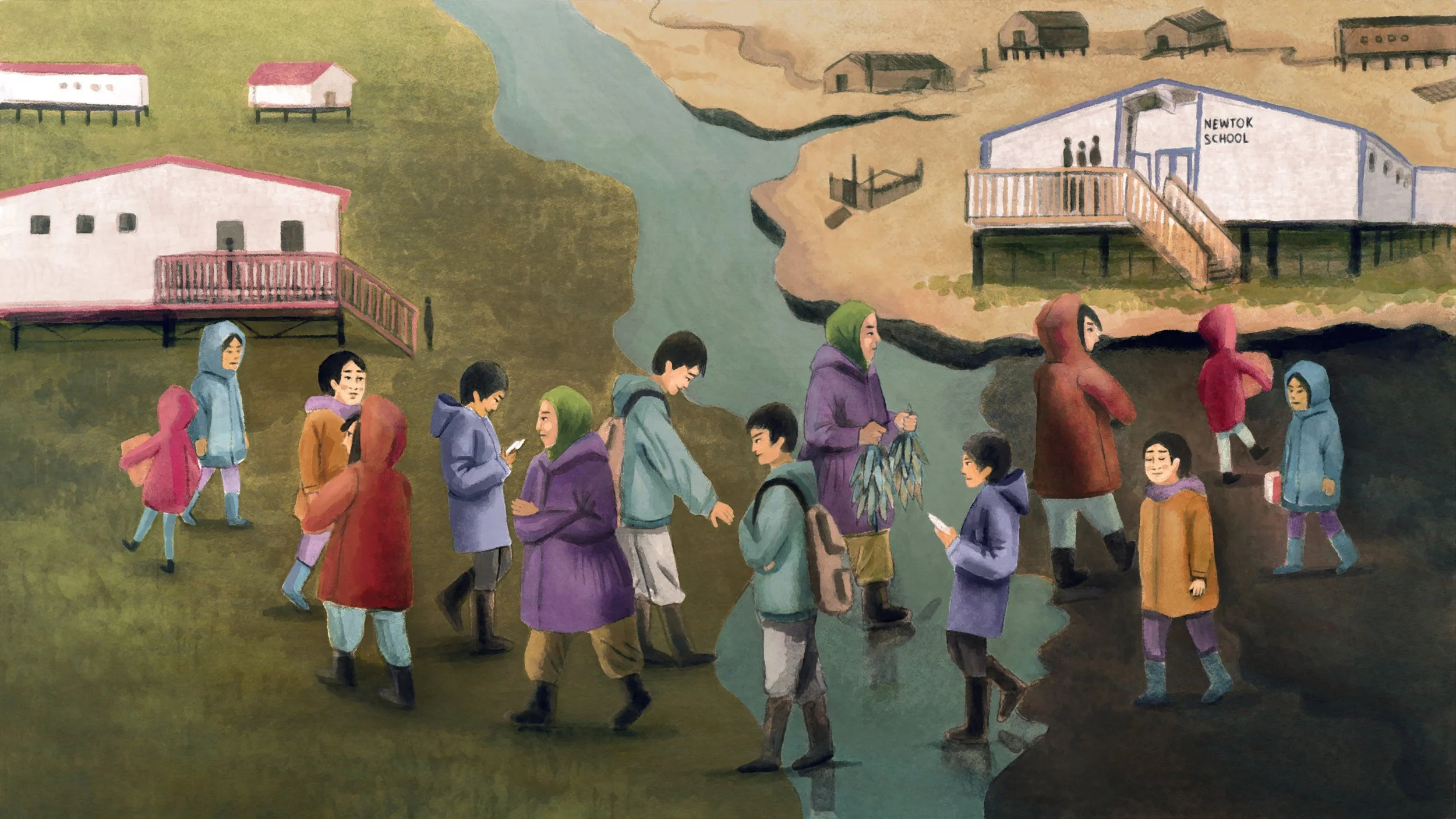In 2023, United Nations University – Institute for Environment and Human Security (UNU-EHS) released a report exploring the work of CJRF partners addressing climate mobility. One key question it poses is: Can planned relocation, if not resourced well, itself be a form of Loss and Damage (L&D)?
In several Alaskan villages—including Shishmaref, Kivalina, and Newtok—residents made the decision to relocate over 20 years ago due to the threats posed by coastal erosion, flooding, and permafrost thaw. Yet decades later, relocation efforts remain incomplete. Some communities are caught in limbo—partially moved, physically split between two sites, and forced to navigate life in the shadow of a relocation that has technically begun, but is far from finished. These prolonged timelines contribute to significant losses and damages: the fragmentation of social ties, chronic stress and deteriorating housing.
Amidst these challenges, Alaska Native communities—supported by the Alaska Institute for Justice (AIJ)—are leading the way in redefining what just and rights-based relocation should look like. Working with 15 Tribes, AIJ has developed a relocation governance framework that centers tribal sovereignty, integrates Indigenous knowledge, and builds community capacity to co-lead decision-making.
One breakthrough has been the recognition of “usteq”, a Yup’ik term describing ground collapse from thaw and erosion, as a formal environmental indicator in Alaska’s Hazard Mitigation Plan—opening up new channels of funding and technical support. AIJ has also facilitated cross-tribal learning and advocacy, helped draft relocation guides, and supported two communities in securing resources to begin relocating homes.
Still, the delays and systemic barriers that persist show how planned relocation can itself become a form of Loss and Damage—when the promise of safety and stability is met with waiting, fragmentation, and uncertainty.
This illustration by artist Victor Ynami (@victor_ynami) helps us visualize the human toll of this slow-moving crisis. Stay tuned as we share more visual stories from CJRF’s partners and the UNU-EHS report—stories that challenge us to rethink what Loss and Damage can look like, and who bears its weight.

